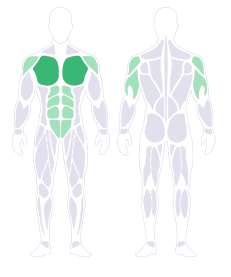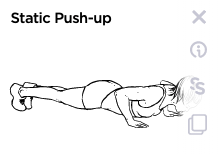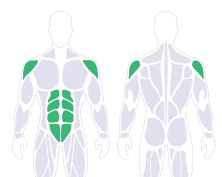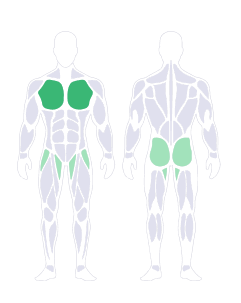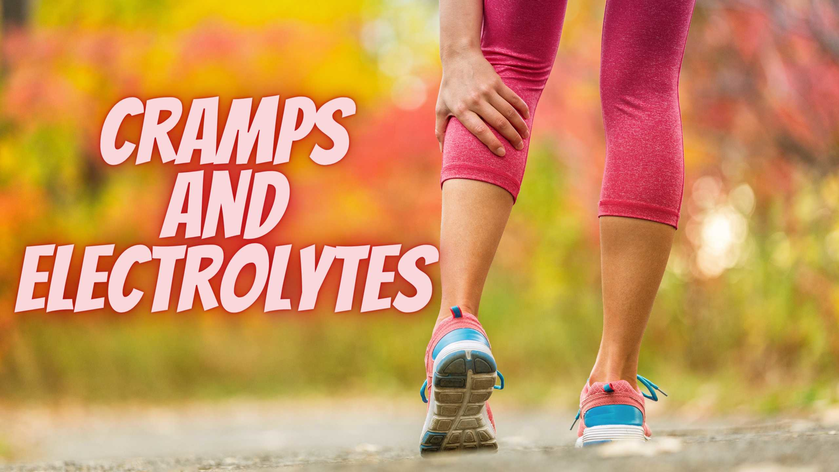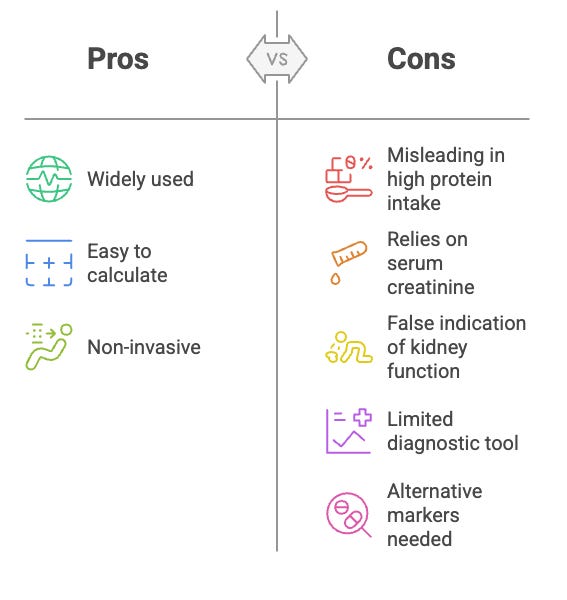Be warned there is a lot to read here! I'd love your feedback so please use the poll.
Leg Cramps
People experience many forms of muscle cramps but before we talk about causes I think it is best to spend some brief time looking at the mechanics of the body. This will help with your understanding of your particular type of cramps. Before starting it is sensible to make you aware that the scientific view of cramps and what causes them is still very vague and even researchers admit it is tough to study due to the unpredictability of incidences of cramps.
https://www.ncbi.nlm.nih.gov/pmc/articles/PMC6901412/
Muscles
You have control over the movement of your body and the way your muscles contract and relax. This is true in most cases but some muscles work without your conscious control. Sometimes, when you experience cramps, the body falls in between the two situations. Because on some occasions muscles will do their own thing. Often contracting but NOT relaxing or periodically you may experience the muscle pulsing
Areas most commonly affected are the thighs, calves, hands, arms, belly, ribcage, and the arches of your foot. It can be just a section of a muscle, the whole muscle, or even the muscle and other muscles around the area. Mainstream medicine is still unclear why they occur, but a few general triggers can initiate them.
Electrolytes are low or not balanced
Your muscles contraction and relaxation rely on things called action potentials (which is a detail not needed for this article) which normally involve minerals, most usually in this case potassium and magnesium, to work appropriately. Essentially your body can signal an electrolyte issue by twitching, cramping or going into spasm. Medications can deplete you of minerals in some cases, the details of which ones are below. Doing any activity that makes you sweat can deplete you too. Any loss of fluid due to diarrhea or being sick can also exhaust you of your electrolytes on a short term basis.There a few other potential causes, if experimenting with electrolytes does not seem to relieve the cramps, I will detail them now in order of how often they come up in clients that have cramping issues.
Stress
This can range from those large life events, such as moving house, losing your job, the death of someone close to you, divorce or trouble of any kind that worries you. But stress is sometimes more subtle, you can be stressed from too much exercise or fasting for too long. Even simple things like light, temperature or noise can be stressful for some people. If you work shifts, have jet-lag from travel or simply have fallen into bad habits and irregular patterns can bring on stress. This can lead to headaches or tension, pain, tightness or cramps in your muscles. If you feel this is the case then massage may work, meditation or some other form of relaxation technique may help.
Excess Caffeine
Caffeine is a stimulant and has been known to trigger muscle twitches in various parts of your body. Other stimulant drugs, like amphetamines, have the same effect. It can also cause eye twitching and vision issues, speaking from personal experience. Alternatives may be swiss water decaf varieties or leaving it out altogether.
Simply a Lack of Sleep or Exhaustion from Any Activity
Being depleted of energy can bring on cramps, twitches, spasms or cramps. Your body is giving you feedback, you need to listen to it. Your muscles might also feel sore, weak or achy.
As Above if You’re Out of Shape then Things Might be Worse
Experiencing cramps or spasms after a simple walk or after a workout or walk, indicates you might need to concentrate on conditioning your body. So do not overdo things but with that said, don’t become lazy. Work at a pace that fatigues you but does not cause injuries or cramps. Adding strength training to your routine at least twice a week may help but remember intensity is personal to you, so if getting out of a chair is difficult for you then start with trying some chair based exercise.
https://www.ncbi.nlm.nih.gov/pmc/articles/PMC3445088/
Medications
Blood pressure medications or prescriptions to treat heart conditions may play a role in some cramping effects. Also diuretics may be involved if you are taking meds to control water retention. This is simply because they make you urinate (pee) more frequently and thus deplete you of electrolytes, especially potassium and can bring on muscle cramps and spasms. Other medications, such as a few of the antidepressants, can cause twitching or even cramps. Psychosis and epilepsy medications might bring on eyelid twitching.
Neuropathy
Nerves communicate with each other in the brain. Damage to the nerve cells can change this communication and can lead to twitches and spasms. Unfortunately some people are born with this problem, but other issues can cause the same thing. Common causes of nerve damage are Diabetes, injuries, infections, alcohol overdose and certain diseases.
Kidney Function Is Dysregulated
The kidney works on fluid and electrolyte balance by working as a filtering system. To do this it absorbs and re-absorbs minerals and water. Any damage to the kidneys may therefore be central to a cramping issue.
Pinched Spinal Nerve
Nerves in the spine exit the spinal cord by passing between the various vertebrae of the spine to the body. If the disks have been damaged in any way then pinching of one or more of the spinal nerves is possible. You may then feel changes in the muscles. Often this is discovered as the issue by use of an MRI or CT scan.
Serotonin Syndrome
If your muscles are twitching within a few hours of taking a new drug or changing your dose, call your doctor. You might have this condition, which happens when some medications, drugs, or supplements cause too much of the brain chemical serotonin to build up in your body. This is a serious condition that usually comes with very high fever and other symptoms and needs medical attention.
Very unlikely conditions but still worth including are listed below
Source www.webmd.com
Lou Gehrig's Disease -- Also Known as ALS
Twitching muscles in the hands and feet can be one of the early symptoms of this condition, also called amyotrophic lateral sclerosis (ALS). It happens because the nerves that send messages from the brain and spinal cord to the muscles stop working. They send irregular messages before they stop sending them completely.
Isaacs’ Syndrome
This rare condition happens when your nerves keep sending signals that make your muscles move, even though your brain or spinal cord isn’t telling them to. That causes muscle twitches, cramps, and stiffness. It may also make your muscles ripple, like something is moving under your skin. Also known as neuromyotonia or Isaacs-Mertens syndrome, the symptoms continue when you're asleep or under general anesthesia.
Electrolytes
These are chemicals that naturally occur in your physiological fluids. Most people have heard of sodium, calcium, potassium, magnesium and possibly chloride and phosphate. There are more but these are the most important minerals for normal body functions and should be present in certain ratios and concentrations.
As mentioned, one of the most central functions of the kidneys is to preserve the ratios of electrolytes by controlling sodium concentrations to meet the body’s needs. This hopefully stops the onset of an electrolyte imbalance.
What do Electrolytes Do?
Electrolytes assist the regulation of fluid levels in the body and blood plasma and keep the blood pH in a stable range. They importantly play a role in muscle contractions, which includes the beating of your heart. They assist in blood clotting and the formation of new tissue. The transmission of messages from nerves, heart and muscles would not happen without electrolytes.
How Does an Electrolyte Imbalance Occur?
Most commonly from losing fluid. This can be diarrhea, vomiting, heavy periods on rare occasions or heavy sweating. When considering sweating you can lose as much as 6% of your body weight through sweating.
In some rare cases, burns may lead to electrolyte imbalance and as mentioned earlier medications may be the cause, for an obvious example, think of laxatives. Steroids can play a role in an imbalance. Not eating or drinking enough is another very common cause.
How Can I Identify If I Have an Electrolyte Imbalance?
The most obvious symptom is cramps. Other possible signs are dizziness, an irregular heartbeat or mental confusion
What Are Some Solutions to Electrolyte Imbalance?
This may be somewhat simple but start with drinking the appropriate amount of water. If your urine is clear you may be drinking too much and if it is dark then you may be drinking too little. Aim for lightly straw coloured.
You may need to drink more if you are taking part in any activity that makes you sweat. Replacing salt at the same time is a good idea.
Practical Tips From Sufferers Who Have Resolved Issues
Magnesium
Increasing fat
Decreasing fat
Adding salt
Limiting salt
Dehydrating during exercise (not advised)
Life-flo magnesium lotion PLUS Remain salt
Redmond’s re-lyte electrolytes cut cramps.
Bone broth
Methyl folate
Coach Cherish said she had cramps and just changed her shoes
I will mention in more detail a couple of other client options
I had a client tell me their cramps completely went after taking D-Ribose. I have looked at it as an option for some people.How Much D-Ribose Should You Take? The dose of D-ribose depends on your needs: General Heart Support: 5 grams of D-ribose twice daily. For Intense Activity: 5 grams daily prior to exercise. For Muscle Cramps: 5 grams after exercise to help alleviate the cramping
This is an email from a client. “I think your idea about the Taurine is a missing link for me. I took ¼ tsp yesterday when I received it in the mail around 2:30pm, and then another ¼ tsp in warm milk again right before bedtime at 1:30am. I know. Not ideal. But I slept through the night for the first time in a month with very minimal foot cramps in the morning that melted away without having to jump out of bed and stand on my foot to get it to stop cramping”
I can not tell which is the best solution, it really does seem to be trial and error.
When I was a coach at MeatRx Dr. Shawn Baker gave his observations on cramps. He said that 60% of people over 50 have leg cramps. He also mentioned research into the causes where they looked at cramps consisted of studies that were not designed well due to the unpredictability of when people get the cramps.
https://www.ncbi.nlm.nih.gov/pmc/articles/PMC6901412/
Medications that may cause cramps.
Source www.webmed.com
Muscle cramps are also a side effect of some drugs, such as:
Furosemide (Lasix), hydrochlorothiazide (Microzide), and other diuretics ("water pills" ) that take fluid out of your body
Donepezil (Aricept), used to treat Alzheimer's disease
Neostigmine (Prostigmine), used for myasthenia gravis
Nifedipine (Procardia), a treatment for angina and high blood pressure
Raloxifene (Evista), an osteoporosis treatment
Asthma medications terbutaline (Brethine) and albuterol (Proventil, Ventolin)
Tolcapone (Tasmar), which helps treat Parkinson's disease
Statin medications for cholesterol, such as atorvastatin (Lipitor), fluvastatin (Lescol), lovastatin (Mevacor), pravastatin (Pravachol), rosuvastatin (Crestor), or simvastatin (Zocor)
Carbohydrates and Cramps
Interestingly in many studies on athletes and cramps those that were carbohydrate-fuelles, hydrated and supplemented with electrolytes still experienced cramps in astonishing 69% of incidences
https://www.ncbi.nlm.nih.gov/pmc/articles/PMC1150229/
And Finally: Charley Horse
Charley horses are most often experienced in the legs but can happen anywhere and they are very uncomfortable. The muscle involuntarily tightens up (essentially it is a muscle spasm).
Causes of Charley Horse
It can often be a restriction in blood flow or poor blood supply to the muscle. Working in high temperatures seems to bring this on in some people. Dehydration is a common cause. A lack of magnesium and / or potassium. Uncommon causes are pinched nerves or kidney damage.
It most often is seen in older clients, see the studies on why.
https://pubmed.ncbi.nlm.nih.gov/10692732/
and at the other end of the scale in athletes https://pubmed.ncbi.nlm.nih.gov/9232553/
So both ends of the ‘fitness scale.’ Pregnant women can experience charley horses as can overweight or obese people. Thyroid disorders, diabetes and nerve disorders are also factors.
Charley Horse Should Not Be Ignored if You Also Experience the Following.
You may need to speak to a medical professional if you also encounter the following symptoms.
Weakness, numbness, diarrhea, vomiting and / or very heavy sweating.
If it was bought on by one-time over-consumption of alcohol then it may be worth a visit too.
References
Muscle cramps https://www.ncbi.nlm.nih.gov/books/NBK499895/
Exercise associated muscle cramps (EAMC)https://www.ncbi.nlm.nih.gov/pmc/articles/PMC3445088/
Athletes and cramps https://pubmed.ncbi.nlm.nih.gov/9232553/
Carbohydrate-fuelled athletes still experience cramps even when hydrated and supplemented with electrolytes
https://www.ncbi.nlm.nih.gov/pmc/articles/PMC1150229/
